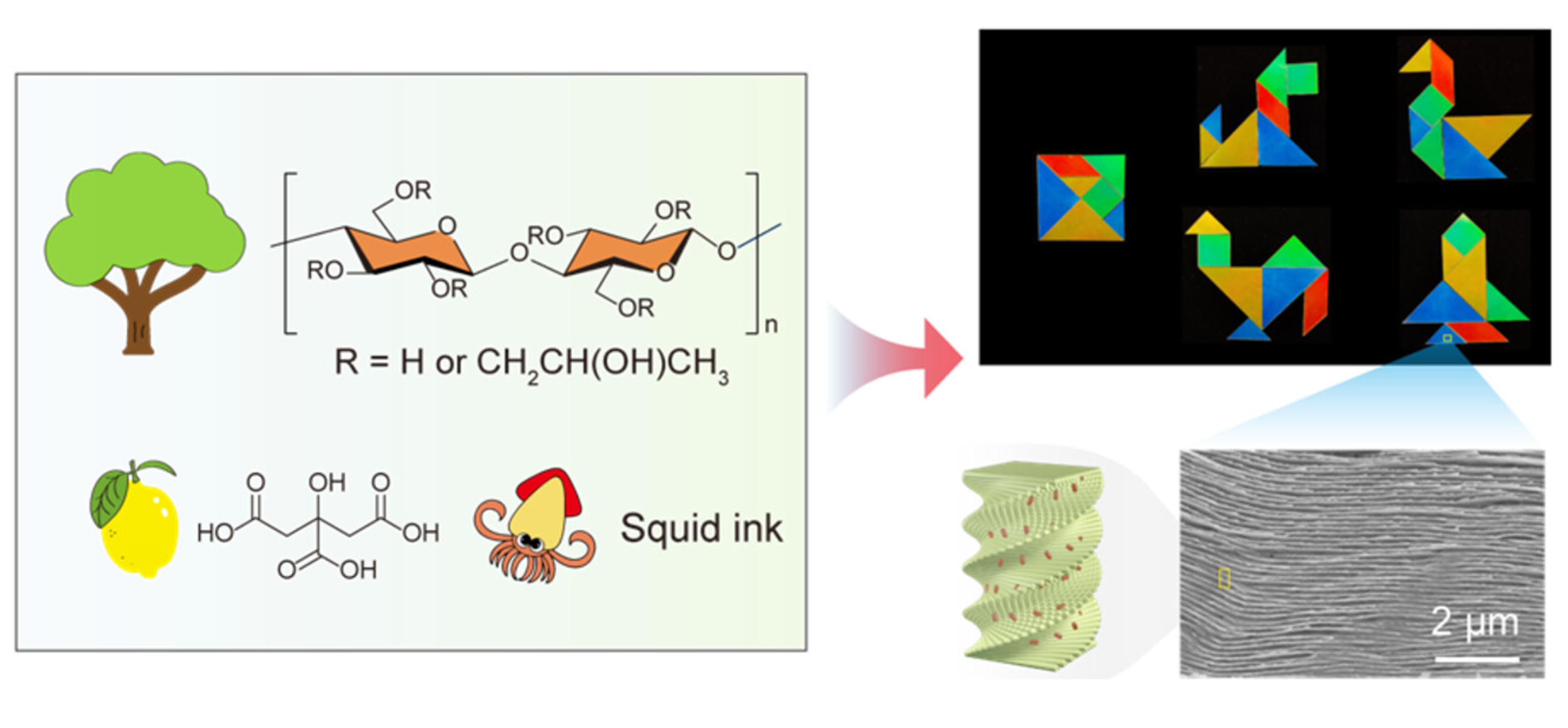Edible Structurally Colored Plastics
Citation
Xu Ma, Baohu Wu, Lei Hou*, and Peiyi Wu*. Edible Structurally Colored Plastics. ACS Nano 2025, 19, 23945-23954.
Abstract
Structurally colored plastics that no longer require dyes/pigments or additional dyeing processes are highly desirable for reducing environmental concerns. However, it remains challenging to fabricate such plastics with simultaneous brilliant structural colors, mechanical robustness, and convenient manufacturing, which are beneficial for their practical use. To address such an issue, we manipulate the cholesteric structures of a cellulose-derived liquid crystalline polymer, hydroxypropyl cellulose (HPC), thus realizing mechanically strong, room-temperature processable plastic substitutes with tunable structural color across the visible spectrum. By simply incorporating strong multiple hydrogen donors, such as citric acid, into the cholesteric pitch of the HPC mesophase, the reflected wavelength of the plastic can be linearly adjusted in the whole visible region. Meanwhile, the structurally colored plastics demonstrate excellent mechanical properties with tensile breaking strength of up to 72 MPa and Young’s modulus of up to 1.6 GPa, comparable or superior to most commercial plastics. Moreover, the all-natural plastics can be facilely manufactured via three-dimensional (3D) printing, injection molding, origami, etc., and are readily recyclable and degradable. This work provides an effective path for the design of ecofriendly plastic substitutes from a whole-life perspective.


